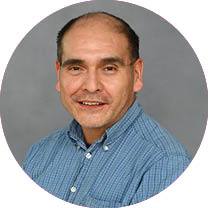North San Antonio resident Ana Balboa was receiving water bills averaging $400 a month, even when she and her family switched off their lawn sprinkler system and used their water carefully.
But after receiving an email alert this summer from the San Antonio Water System’s Connect H2O system, which collects hourly water meter readings, Balboa found an underground water pipe leak and had it fixed.
Balboa said she was thankful the alert helped to track down the undetected broken water pipe.
“Hopefully, our experience will be helpful to others,” Balboa said.
Two-minute impact
SAWS spokesperson Anne Hayden said the system’s overall water supply is doing well, but the summer’s high demand for outdoor watering prompted record pumping and caused nearly 1,000 water pipe breaks and leaks in August, up from 729 in July.
SAWS officials said the drought and high temperatures contributed to levels dropping in a key Edwards Aquifer water monitor from 647.6 feet in June to 633.2 feet Oct. 9.
According to the National Weather Service, between Jan. 1 and Oct. 9, the area received 15.64 inches of rain—about 9 inches below average.
NWS data also showed this summer was the city’s hottest on record, including 74 days of temperatures 100 degrees Fahrenheit or higher.
Karen Guz, SAWS’ vice president of water conservation, said despite restrictions, infrastructure is affected by excessive water use and dry grounds.
Stressed water infrastructure can strain the water system and SAWS crews, and it can challenge firefighters who need adequate water pressure to fight a fire, Guz added.
Guz said residents should not take for granted the utility expanding its water supply, including the 2020 launch of the 142-mile Vista Ridge pipeline.
“When demand goes up incredibly high from even a small percentage of our customers violating the rules, we can eat through those new supplies really fast,” Guz said.
Put into perspective
Guz said the drought, water main breaks and leaks are exacerbated by water losses blamed on waste and excessive use.
Seeking to discourage water abuse and encourage efficiencies, Hayden said SAWS officials issued more than 7,000 water waste citations between January and August this year.
Hayden said SAWS patrols have increased in areas of higher water usage, including north side and far west side neighborhoods.
But Guz said SAWS is hampered in that staff can only cite water use violators in San Antonio’s city limits and extraterritorial jurisdiction, and not inside incorporated cities served by SAWS, including Hollywood Park, Shavano Park and Hill Country Village.
Get involved
Guz said SAWS officials are working to further raise public awareness of conservation measures, such as a rebate program for water savers and free irrigation system checkups.
Customers, such as Balboa, are often surprised by high water bills and reach out for help, Guz said. SAWS’ Connect H2O system automatically alerts users on continuous water flow or increased use.
What’s next
SAWS officials are proposing revisions to the city’s conservation ordinance, including replacing citations with a fee on violators’ water bills and adding an excess use surcharge. This could reduce water use among the top 10% of consumers when the Edwards Aquifer Authority declares a certain level of restrictions, Guz said.
SAWS is also proposing an excess use surcharge that could reduce water use among the top 10% of consumers whenever the Edwards Aquifer Authority declares a certain level of restrictions.
Additionally, SAWS aims to limit drip irrigation to one designated watering day, and improve the quality of new home irrigation systems, Guz said.
Guz said the SAWS board seeks to vote on the proposed conservation and enforcement changes later this fall or winter and forward them to City Council for action in early 2024.






